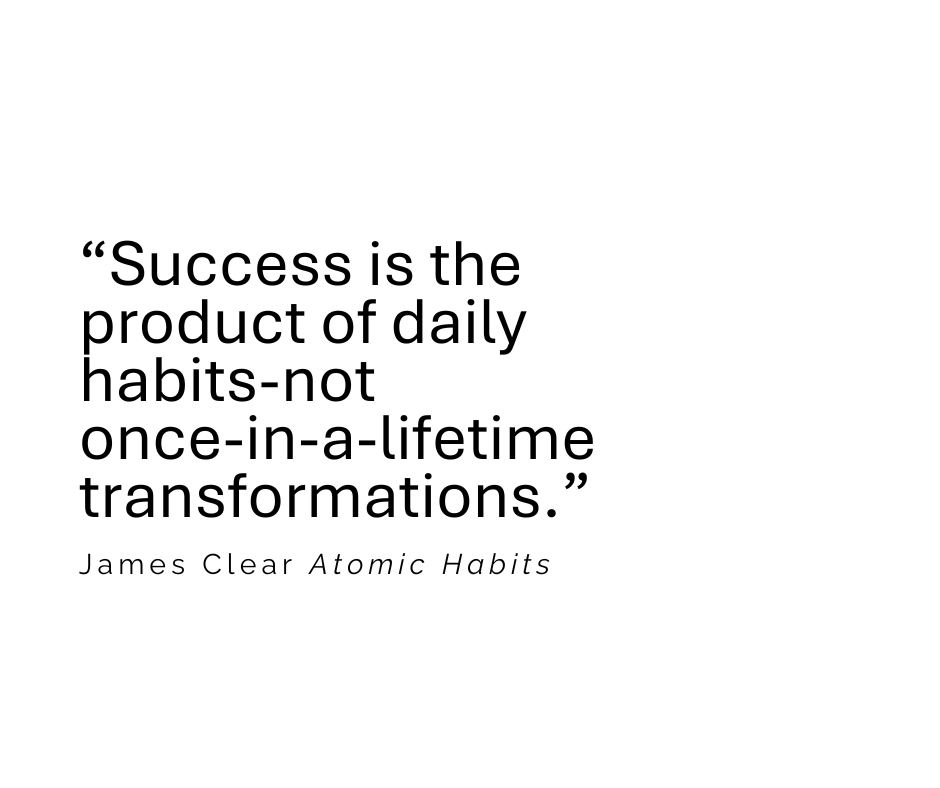As summer break begins, it’s tempting to put all thoughts of school on the back burner for a few weeks—and rightfully so! Rest and renewal are essential. But this is also the perfect window to reflect on the habits and routines that support not just how we feel, but how well we function—at school, at home, and in life.
Too often, discussions about teacher well-being focus on “self-care” in a way that feels shallow or unrealistic. Tellin g teachers to squeeze in bubble baths or gratitude journals can feel like just one more thing on an overflowing to-do list. Instead, it can be more helpful to reframe the conversation: what personal routines help us bring our best selves to the classroom? What habits give us more energy, more focus, more resilience—so that we can be effective educators and live well outside of school?
g teachers to squeeze in bubble baths or gratitude journals can feel like just one more thing on an overflowing to-do list. Instead, it can be more helpful to reframe the conversation: what personal routines help us bring our best selves to the classroom? What habits give us more energy, more focus, more resilience—so that we can be effective educators and live well outside of school?
With that in mind, here are a few practical areas to consider as you look ahead to the new school year. None of these are about adding more to your plate. They’re about building sustainable rhythms that fuel everything you do.
1. Prioritize Rest–and Protect It
Teaching is physically and mentally demanding. The energy you bring to your students depends, in part, on how well you recharge.
Start by taking an honest look at your sleep routines. Are you consistently getting enough rest during the school year? If not, this summer is a great time to reset your sleep schedule. Try building in a consistent wind-down routine at night and setting boundaries around work that creeps into late hours.
Beyond sleep, make room for genuine downtime in your weekly schedule—time when you are not planning lessons, grading, or attending school events. When rest becomes a routine rather than a luxury, it strengthens your capacity for all the other parts of your life.
2. Move Your Body Regularly
Movement isn’t about reaching fitness goals—it’s about supporting the stamina, flexibility, and mental clarity that teachers need. Whether it’s a daily walk, yoga, stretching, swimming, or something more structured, regular physical activity helps regulate stress and improves both mood and focus.
This summer, experiment with routines that feel good to you. As the school year approaches, think about how to keep movement in your week. That might mean scheduling workouts, but it can also be as simple as using planning periods to take a quick walk or adding some light stretching after school. The goal is not perfection—it’s consistency.

3. Fuel Your Body Well
It’s no secret that teacher lunch breaks are often rushed—or skipped altogether. But stable energy depends on how we fuel ourselves.
Use the summer to experiment with meal planning strategies that will work during busy weeks. Try out a few healthy, packable lunches. Identify easy breakfasts that sustain energy through morning classes. Stock your classroom with nourishing snacks for long days.
Small, consistent improvements in nutrition can make a big difference in how you feel throughout the school day.
4. Establish a Work to Home Transition Routine
Teaching requires immense emotional labor. If we don’t intentionally build routines to clear mental clutter, stress accumulates.
One helpful strategy is to establish mental “shut-down” routines after the school day. This might include taking five minutes to jot down unfinished tasks for tomorrow, a quick walk before heading home, or a short reflective practice to separate school from personal time.
Consider also limiting how often you check work email outside of contract hours. It’s okay to have boundaries—healthy boundaries actually make you a more focused, effective teacher during the hours you are working.
5. Use a Planning System That Works for You
One of the most powerful ways to support both personal well-being and professional effectiveness is having a planning system you trust. When you don’t have to mentally “carry” all your to-dos, appointments, and responsibilities, your mind is freer to focus—and to rest.
You don’t need a complicated system. It could be a paper planner, a simple digital calendar, a notebook, or an app—as long as it helps you track both work and personal commitments.
An effective planning habit can:
- Clear mental clutter so you aren’t lying awake thinking of what you might forget
- Help you approach each week with realistic expectations and priorities
- Support work-life balance by giving visibility to both personal and professional needs
- Make your teaching more intentional and organized
This summer is a great time to evaluate what planning system will serve you best during the year ahead. A small investment in getting organized now can pay huge dividends in peace of mind and productivity once the school year is in full swing.

6. Nurture What Brings You Joy Outside of Teaching
Teaching can easily become all-consuming. But we are most effective in the classroom when our lives outside of it are rich and fulfilling.
Use the summer to reconnect with hobbies, relationships, and activities that you enjoy. As the year begins, be intentional about protecting some space for these things—even if it’s just an hour or two each week. Having outlets for creativity, connection, and joy strengthens resilience and prevents burnout.

7. Build Connections with Colleagues
Healthy habits aren’t just individual—they’re relational. A supportive network of colleagues can make all the difference in how we experience the school year.
During the summer, consider reaching out to reconnect with teammates or teacher friends. As school begins, prioritize building and maintaining those relationships. Simple rituals—a quick morning coffee chat, a shared lunch once a week, checking in on a colleague after a hard day—create a culture of mutual support.
A Final Thought: Small Steps Matter
None of us will build “perfect” routines. The goal is not to do everything, but to take small, sustainable steps that move us toward greater health and effectiveness. Pick one or two habits to focus on this summer and carry into the fall.
Remember: the healthier your personal rhythms, the more energy and clarity you bring to your students, your classroom, your family, and your life.
Here’s to a summer of restoration—and a school year set up for success.
